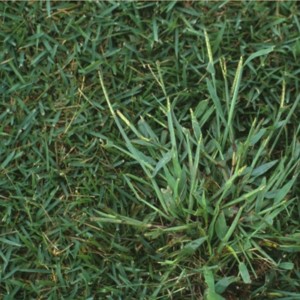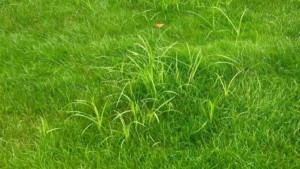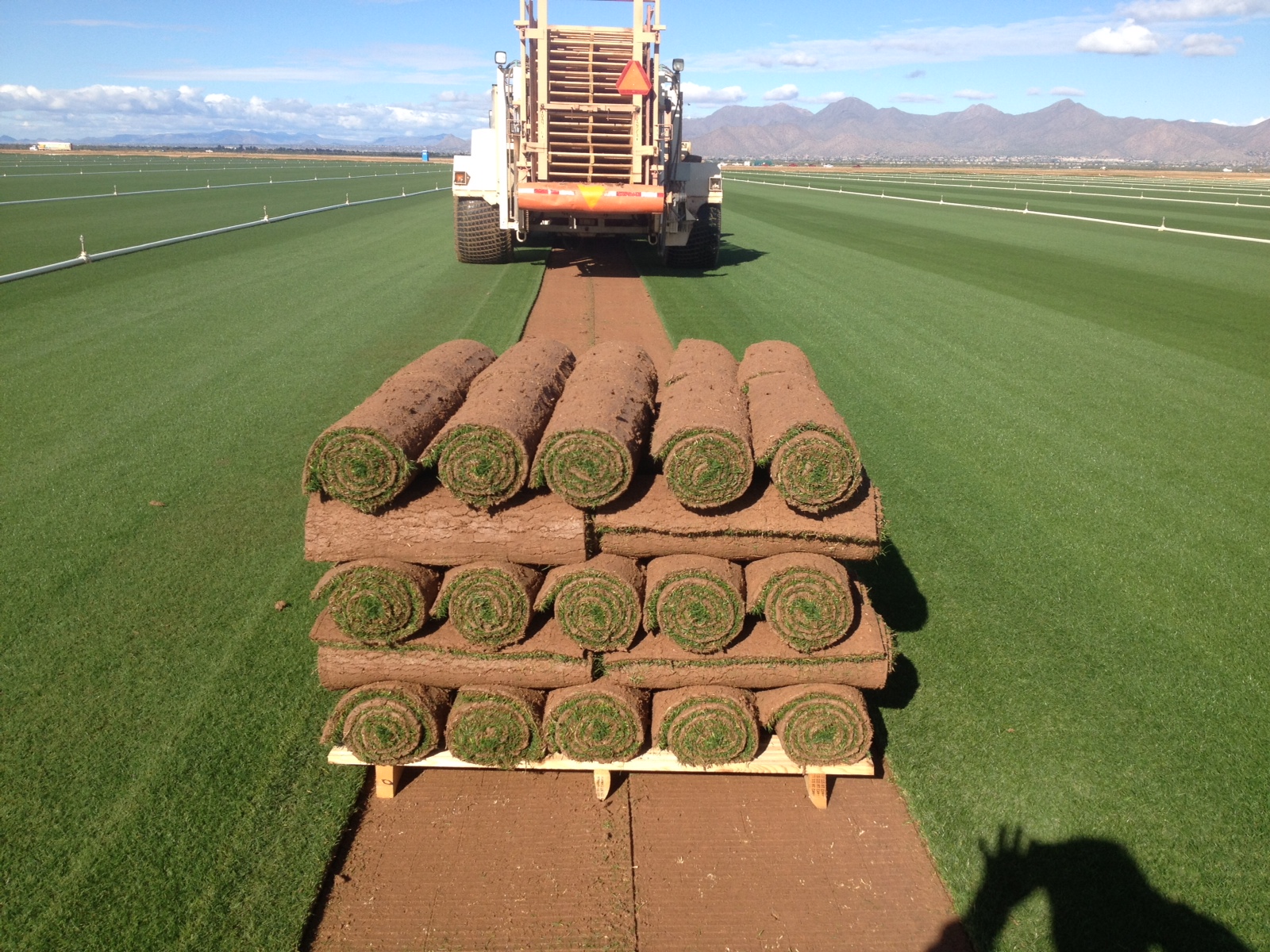Jan
Weed Control Tips for Your California and Arizona Lawn
2017 has started out nicely with some timely rainfalls to keep most of you from having to water your lawn. It has also helped us move closer to getting out of the drought we’ve been suffering from for the last few years. The winter storms are helping us replenish our water supplies but they’re also helping germinate all of those of those summer annual weeds in the soil. The good news is weeds are relatively easy to contain. There are some types such as annual bluegrass, crabgrass, and nutsedge that are a little more complicated but timing pre-emergent herbicide applications can save you a lot of headaches with weed control. In this blog I will go over various weeds and some ways to control them as well as discuss herbicide timing.
Weed control management is a function of several different factors but some of the things you can do to keep your lawn healthy are maintain the proper mowing height, don’t overwater your lawn, fertilize monthly, and aerate the turf when the soil becomes compacted. These items right here can be the difference between weeds slowly emerging in your lawn and taking over your lawn. A healthy lawn will push out weeds and keep them to a minimum. If you have very few weeds emerge during the year chemical application is unnecessary and weeds can be pulled by hand as they appear.
Comments Off on Weed Control Tips for Your California and Arizona Lawn
May
Saving Water on Your Lawn and the Benefits of Natural Turfgrass
SAVING WATER………
Everyday we are reminded that we are in a drought situation. My last few blogs have been about this same subject, and I think it is important to continue with the topic.
The press is convinced that ripping out your lawn is the answer. But is it? No. You can have an environmentally beneficial lawn and use water wisely! Here are some more tips on how to save water while still keeping your lawn alive during our historic drought: Read the rest of this entry »
Comments Off on Saving Water on Your Lawn and the Benefits of Natural TurfgrassFeb
WEEDS! Pre-Emergent Herbicides and Your Lawn
Last week it was raining and in the low 60’s and this week we will be pushing the low 80’s. Everyone knows that the rain is great for our lawns but it is also great for producing weeds.
As we move through February it is important to think about your lawn from the previous year. Did you have weed issues? Were you constantly pulling spurge out of the lawn during the summer? Even if you didn’t have a bad case of this last year you should still think about putting down a pre-emergent herbicide. The window to apply these is from now until the end of February. If you miss the window and the seedlings have already germinated you can bet you will be on your hands and knees this summer pulling weeds out of your turf.
Comments Off on WEEDS! Pre-Emergent Herbicides and Your Lawn
Nov
Thanksgiving Tips for Your Lawn
As we approach Thanksgiving it is a good time to start thinking about your winter fertilizer program. In past blogs I talked about getting down a few fertilizer applications prior to the first frost of the year. In general we will receive our first frost sometime between Thanksgiving and the first week of December. The first couple of frosts are usually pretty mild, but as we get deeper into December we will get some hard freezes which will start to affect your roots. Once we get frost all the way down to the roots it makes it tougher for the plant to take up fertilizer so foliar applications generally provide the best response.
For those unfamiliar with why plants freeze let me provide you with a simplistic definition. Water vapor condenses into liquid water and forms ice as the temperature drops at or below 32 degrees. Temperatures on the ground are typically cooler than the air just a few feet above the ground surface. On a clear, calm night with no little wind the cold air sinks to the ground level and while the thermometer may not read 32 degrees or lower, the ground temperature is below freezing. You will notice that when there is a heavy cloud cover there is typically no frost. This is because the grass does not need to emit as much radiation because the clouds reflect the radiated heat. On a cloudy day dew will form on the ground making it very unlikely that frost will form on the ground.
Comments Off on Thanksgiving Tips for Your LawnSep
Thinking About Overseeding Your Warm Season Lawn?
With the heavy rains and slightly cooler temperatures we had this past week no doubt people are thinking about overseeding. By the way, if your sprinklers are still set to on, turn them OFF. While the calendar says September 11th we’re still a few weeks away from having temperatures in the optimal window. Overseeding does not need to be a one day process. You can begin the process a little early and then when temperatures are in the 60’s at night you will just need to give your lawn one last haircut, drop the seed and begin watering.
Prepping for overseed is often a large ordeal, but starting the process gradually you can eliminate the headaches associated with trying to get it all done in one afternoon. I want to reiterate something I have said for the past few years. The height of the grass is not associated with a quality overseed. In other words scalping the grass down to the dirt does not guarantee good results, but opening up the turf canopy does. The shorter you mow your lawn the tighter the leaf blades become making it harder to get the ryegrass seed into the plant. If the seed is lying on the surface it will be slow to germinate and much of the seed will be lost. The seed needs a base to grow out of and getting inside the grass plant allows for perfect moisture, heat, and a solid growing medium. By looking at my last statement you can now understand why I have said without a good warm season grass base you will most likely have a poor ryegrass season. The seed will establish much faster inside a healthy grass stand than it will on bare dirt. Read the rest of this entry »
Comments Off on Thinking About Overseeding Your Warm Season Lawn?Aug
Evaluating Your Summer Lawn
As we move through the dog days of summer in California and Arizona, now is a good time to evaluate your turfgrass lawn. The summer is the optimal time to grow warm season turfgrasses so it is important to get good growth before the end of the season. The golden rule is that all warm season grasses need to have 100 days of growing without any competition in order to maintain their health. That is 100 days without any lingering ryegrass in the way. Think back to when the ryegrass was completely out of your lawn? Was it June or did it hang around until July? If you didn’t transition it by mowing lower and verticutting then most likely you still had some ryegrass until the humidity increased and wiped it out in July. Read the rest of this entry »
Comments Off on Evaluating Your Summer LawnMay
SPRING TRANSITION FAQ
The word transition tends to conjure up some ugly thoughts in people’s minds. Transition is often used to describe moving from one stage to another or in the case of sports teams are often transitioning from one style of play to another. Fans of sports teams cringe when they hear the word transition and the same is true for most turf managers but with turf it is often an easy fix. My goal today is to answer some frequently asked questions on transition, sod install, fertilizer and watering for the summer. If you have another question that I didn’t list please let me know.
Q. I overseeded my lawn last fall and I can’t get the ryegrass to die off. Can I turn the water off and kill it?
A. Yes and no. You can turn the water off and severely stunt or kill the ryegrass but you will also do some serious harm to your warm season turf. It is best to cut your water back 30-40% and let it fade away with the warmer temperatures.
Comments Off on SPRING TRANSITION FAQSep
Overseeding Your Lawn 101
We’re getting closer to the overseeding process! I am sure many of you reading my blog have started to see perennial ryegrass arriving in stores by the truck full, but we are still a little early. It isn’t too early to start some of the initial prep work, but it is still a little hot to drop seed. I realize that some of you won’t have a choice in the timing of overseeding, but if you do have a choice it is best to wait. Today’s blog is going to give you 10 easy steps on how to overseed and establish a great lawn for the winter. I have also attached a short video on doing so. http://www.youtube.com/ Read the rest of this entry »
Comments Off on Overseeding Your Lawn 101Nov
Selecting Turf During Overseed Season/College Football Week 10/Ultra Run #3
At this time of the year there is not a warm season grass that is going to have time to root into the ground without having ryegrass to help it establish itself into the soil. We are just beginning to get into the season of having cool nights and mild days, but that doesn’t mean you can’t put down sod.  Read the rest of this entry »
Read the rest of this entry »
Oct
FAQ’s/College Football Week 7/Ultra Run #2
About once a month it is always good to post some of the most frequently asked questions during that time period as well as some that I know many of you may have.
I overseeded too early and lost some of the seed to the heat, when do I know I need to reseed? Read the rest of this entry »
Comments Off on FAQ’s/College Football Week 7/Ultra Run #2





